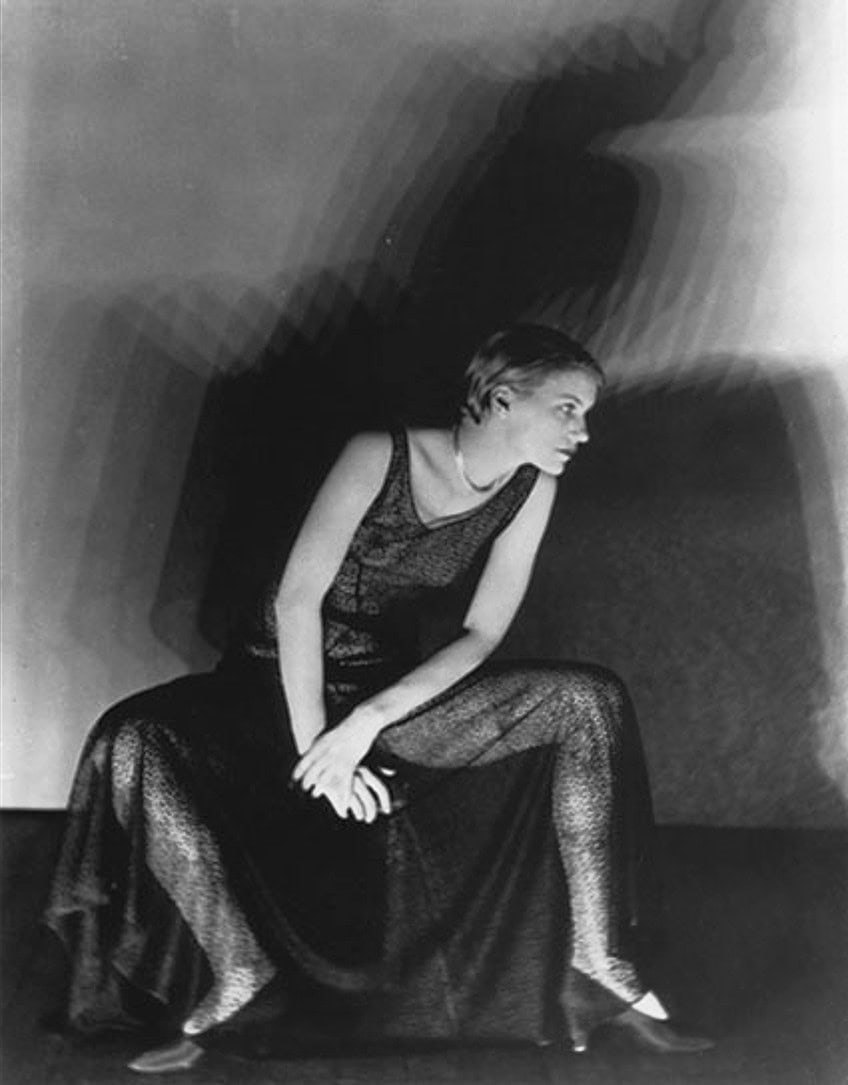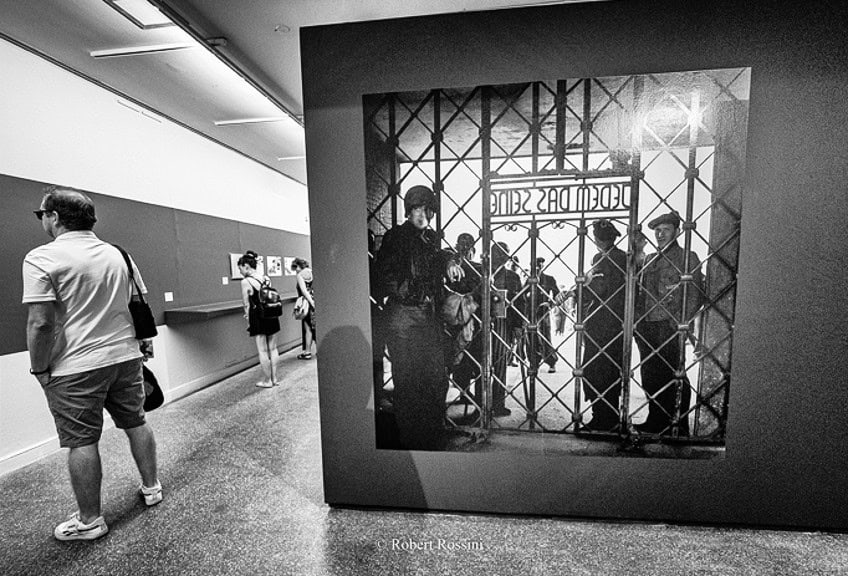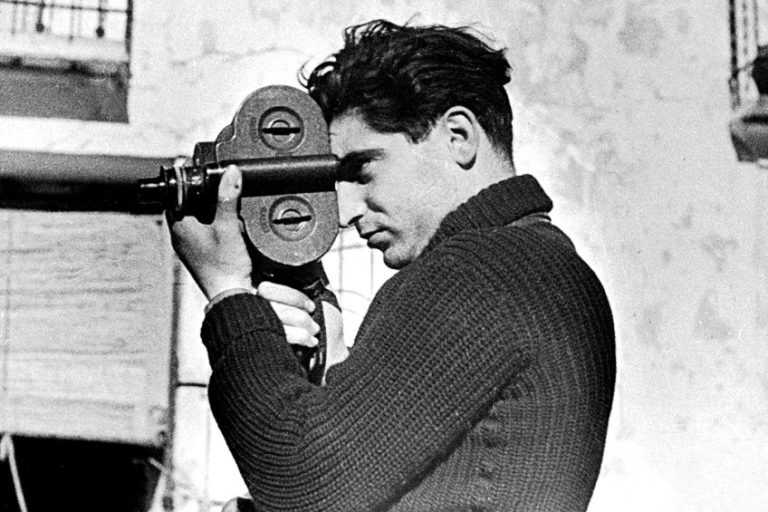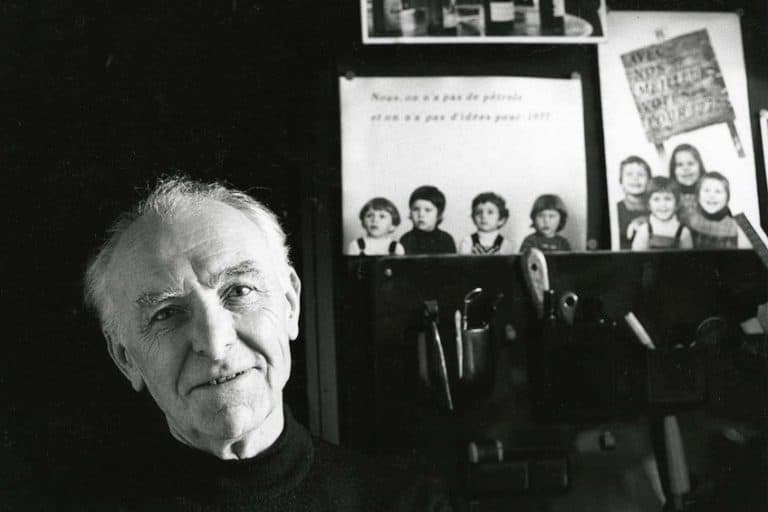Lee Miller – The Life of the Model Turned War Photographer
Lee Miller, an iconic figure in the world of photography, is renowned for her profound impact on 20th-century art and photojournalism. Born in 1907, Miller’s journey began as a fashion model before she transitioned behind the camera, becoming a muse and collaborator to notable Surrealist artists such as Man Ray. Her work is celebrated for its innovative blend of Surrealism and documentary realism. During World War II, Miller’s hauntingly powerful images as a war correspondent for Vogue captured the harrowing realities of conflict and its aftermath, including the liberation of concentration camps. Through her lens, Lee Miller not only documented history but also challenged and expanded the boundaries of photographic expression.
Key Takeaways
- Lee Miller was a multifaceted artist who evolved from fashion modeling to influential photography.
- Her relationship with Man Ray profoundly impacted her artistic journey.
- She documented World War II, providing crucial visual records of the conflict’s atrocities.
Early Life and Career
| Birth | April 23, 1907 |
|---|---|
| Death | July 21, 1977 |
| Place of Birth | Poughkeepsie, New York, United States |
| Genre of Work | Photography and Surrealism |
Elizabeth “Lee” Miller, Lady Penrose, was a groundbreaking artist whose remarkable career spanned numerous fields, including fashion modeling, photography, and war reporting. Born in 1907, Miller’s versatility and daring creativity led her to Paris, where she became a pivotal figure in the Surrealist movement.
Her transformation from a Vogue cover girl to a fearless war correspondent who documented the horrors of World War II is a testament to her indomitable spirit and extraordinary talent.
Miller’s early career saw her as a model in New York City in the 1920s, but it wasn’t long before she transitioned behind the camera. In Paris, she collaborated with and was mentored by the Surrealist artist Man Ray, becoming both his muse and an innovative photographer. Her personal and professional relationship with Ray significantly shaped her artistic development, leading to the creation of some of her most celebrated works.

During World War II, Miller became one of the few female war correspondents, capturing haunting images of conflict and its aftermath. Her photographic evidence of Nazi concentration camps remains some of the most powerful and enduring visual records of the war’s atrocities. Today, Lee Miller’s legacy is celebrated for her immense contributions to both fashion and photojournalism, making her an enduring icon in the history of art and photography.
Childhood and Education
Elizabeth “Lee” Miller was born on April 23, 1907, in Poughkeepsie, New York. Known as the middle child, she enjoyed an intellectually stimulating environment. Her father, Theodore Miller, an engineer, and amateur photographer, exposed her to the world of photography early on. Miller’s education was shaped by her attendance at Vassar College, a prestigious institution located near her hometown.
This early exposure to both technical skills and creative thinking laid the foundation for her later achievements in arts and photography.
Rise to Fame as a Fashion Model
Miller’s modeling career began in Manhattan in the 1920s when she was discovered by Condé Nast, the publisher of Vogue. Her striking beauty and unique presence caught the attention of prominent photographers like Arnold Genthe and Edward Steichen.

Their collaborations helped her become a sought-after model, gracing the covers of numerous fashion magazines. Her time as a fashion model not only elevated her status in the fashion world but also served as an entry point into the creative realms she would later dominate.
Transition to Photography
Miller transitioned from modeling to photography under the mentorship of Man Ray in Paris in the late 1920s. She became deeply involved in the Surrealist movement, working closely with Ray and even co-developing the solarization technique. Her work exhibited unique surrealist qualities and a keen artistic eye. Miller later moved to Cairo, Egypt, where she continued to refine her photographic skills.
This transition was pivotal, shifting her from the subject of photographs to a creator of compelling visual stories.
Artistic Development and Relationships
Lee Miller’s artistic journey was shaped significantly by her immersion in Surrealism and her interactions with notable figures in the art world. Her collaborations with artists like Man Ray and friendships with Surrealist icons were pivotal in her creative evolution.
Influence of Surrealism
Surrealism had a profound impact on Miller’s artistic development. After moving to Paris, she immersed herself in the Surrealist movement, exploring themes of the unconscious and the dream-like quality of reality in her photography and art.

Using techniques such as solarization, she created ethereal and striking images that challenged conventional perceptions. Her work often embodied a blend of beauty and the bizarre, embodying Surrealist principles. Collaboration with Surrealist artists like Picasso and Jean Cocteau further influenced her style, pushing her toward more experimental and boundary-breaking work.
Partnership With Man Ray
Miller’s partnership with Man Ray was one of the most crucial phases in her career. Initially his student and model, she quickly became his artistic collaborator and muse. Together, they innovated techniques, notably the development of solarization, which became a hallmark of her photographic style. Their relationship, both personal and professional, was intensely creative. Miller not only assisted in Man Ray’s projects but also produced her own significant body of work during this period.
This partnership propelled her deeper into the Surrealist circle and solidified her standing as a formidable artist in her right.
Collaborations and Friendships
Beyond her partnership with Man Ray, Miller formed lasting relationships with other prominent Surrealist artists. Her friendships with Picasso, Max Ernst, and Jean Cocteau were particularly influential. Picasso painted her portrait several times, indicating a mutual respect and admiration.

Her collaborations extended beyond photography into film and theater. She worked with Cocteau on his experimental film, Blood of a Poet, marking her influence in multiple artistic domains. These collaborations and friendships enriched her work, blending different artistic mediums and perspectives into her unique vision.
Lee Miller’s War Reporting
Lee Miller documented some of the most pivotal and harrowing moments of World War II, from landing in Normandy to witnessing the liberations of Paris and Nazi concentration camps. Her unique perspective as both a war correspondent and war photographer allowed her to capture the raw realities of the conflict.
Chronicling World War II
Lee Miller began her journey as a war correspondent for British Vogue. Initially met with resistance, her determination saw her eventually documenting significant events on the European continent. In June 1944, Miller covered the aftermath of D-Day by embedding with the US military, capturing the harrowing scenes through her lens.
Working alongside fellow correspondents like David E. Scherman, she provided intimate glimpses into the lives of soldiers and civilians during the conflict.
Her coverage extended to the liberation of Paris in August 1944, where she photographed and reported on the joyous yet chaotic scenes as Allied forces wrested control from Nazi occupation. Her work during this period highlighted both the suffering and resilience of those caught in the war.
Revelations of the Holocaust
In early 1945, Lee Miller journeyed through Germany, documenting the aftermath of the war’s atrocities. Her most profound work came from her visits to the concentration camps of Buchenwald and Dachau. Photographs from these camps powerfully conveyed the horrors of the Holocaust.

Miller’s haunting images included emaciated survivors and the grim facilities used for systematic murder. Her photo of herself in Hitler’s Munich apartment bathtub symbolized the surreal juxtaposition of personal normalcy amidst massive atrocities. These reports and images provided undeniable proof of the horrors encountered, cementing her legacy as one of the most impactful war correspondents of her time.
Legacy and Influence
Lee Miller’s diverse career as a photographer, photojournalist, and Surrealist left a significant mark on the fields of fashion and art. Her contributions have been preserved and celebrated through numerous exhibitions and publications.
Post-War Life and Recognition
After World War II, Lee Miller relocated to Sussex with her husband, Roland Penrose. She shifted her focus from photography to a quieter domestic life, becoming a gourmet chef. Despite her departure from the public eye, her impactful work continued to gain recognition. Her role as a war correspondent for Vogue, covering the London Blitz and the liberation of Paris, solidified her legacy.
Miller’s photographic coverage of concentration camps brought harrowing images to the forefront, underscoring her significant contributions to photojournalism.
Preservation of Lee Miller’s Archives
Miller’s archives, meticulously preserved by her son Antony Penrose, have been crucial in re-evaluating her legacy. The Lee Miller Archives in Sussex house a vast collection of her work, ensuring her contributions to photography and art are recognized.

Her son has been instrumental in organizing exhibitions and publishing books that highlight Miller’s achievements. This effort has enabled a broader audience to appreciate the depth and variety of her work, from fashion photography to war reportage. These endeavors have cemented her position as a pioneering figure in multiple artistic and journalistic fields.
Lee Miller’s legacy as a pioneering photographer is a testament to her extraordinary vision and resilience. Her ability to seamlessly navigate the realms of Surrealism and war photography has left an indelible mark on the history of art and journalism. Miller’s compelling images, which captured both the beauty and brutality of the human experience, continue to inspire and resonate with audiences today. Her life and work exemplify the power of art to transcend boundaries and confront the complexities of the world, cementing her status as a trailblazer in the field of photography. As we reflect on Miller’s contributions, we are reminded of the enduring impact of her fearless exploration of the human condition through her lens.
Frequently Asked Questions
How Did Lee Miller Contribute to Photography?
Lee Miller made significant strides as a studio and fashion photographer, becoming well-known for her work with Man Ray. Most notably, her war photography for Vogue during World War II left a lasting impact on the field.
Who Were Some of the Notable Subjects in Lee Miller’s Photographs?
Miller captured images of many prominent figures, including Pablo Picasso and Jean Cocteau. She also documented soldiers and civilians affected by the war, adding depth and human context to her wartime coverage.
What Role Did Lee Miller Play During World War II?
During World War II, Miller served as a war correspondent for Vogue. She bravely covered significant events such as the London Blitz, the liberation of Paris, and the concentration camps at Buchenwald and Dachau, providing a raw look into the war’s realities.
What Are Some of the Characteristics of Lee Miller’s Photographic Techniques?
Miller was known for her innovative use of light and shadow, creating striking contrasts in her images. She often employed surrealist techniques, influenced by her time working with Man Ray, and her war photography included unflinching, candid shots that captured the horror and humanity of conflict.
Isabella studied at the University of Cape Town in South Africa and graduated with a Bachelor of Arts majoring in English Literature & Language and Psychology. Throughout her undergraduate years, she took Art History as an additional subject and absolutely loved it. Building on from her art history knowledge that began in high school, art has always been a particular area of fascination for her. From learning about artworks previously unknown to her, or sharpening her existing understanding of specific works, the ability to continue learning within this interesting sphere excites her greatly.
Her focal points of interest in art history encompass profiling specific artists and art movements, as it is these areas where she is able to really dig deep into the rich narrative of the art world. Additionally, she particularly enjoys exploring the different artistic styles of the 20th century, as well as the important impact that female artists have had on the development of art history.
Learn more about Isabella Meyer and the Art in Context Team.
Cite this Article
Isabella, Meyer, “Lee Miller – The Life of the Model Turned War Photographer.” Art in Context. July 18, 2024. URL: https://artincontext.org/lee-miller/
Meyer, I. (2024, 18 July). Lee Miller – The Life of the Model Turned War Photographer. Art in Context. https://artincontext.org/lee-miller/
Meyer, Isabella. “Lee Miller – The Life of the Model Turned War Photographer.” Art in Context, July 18, 2024. https://artincontext.org/lee-miller/.









